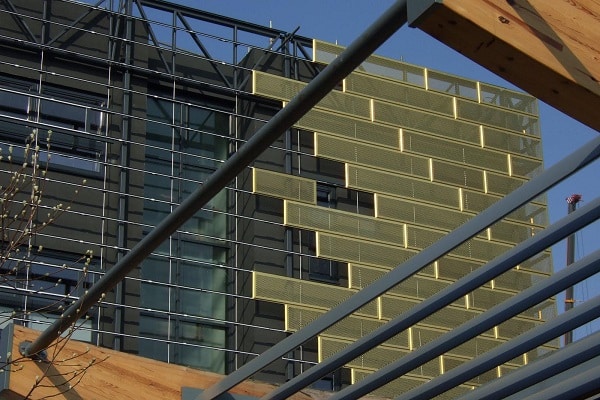British designer and architect William Morris said: “Have nothing in your house that you do not know to be useful, or believe to be beautiful”. While he’s known for his interior wallpaper, we’re sure that this long-departed aesthete would have been thrilled with the new vogue for external cladding that’s making houses look amazing and more efficient.

If you live through harsh winters, and your fuel bills are rocketing, you should think about metal cladding for the outside of your home. It’s actually quite easy to retrofit, and although it’ll cost a few grand initially, you’ll start recouping the cost immediately. The best thing is that this form of cladding lasts for decades with scarcely any work needed on it.
We tend to think of metal roofs and walls as industrial, or restricted to tin homes in shanty towns, but these days that image couldn’t be further from the truth. Metal coverings and roofs have evolved into design masterpieces that simply couldn’t be achieved with slate, or shingles. A metal roof can look amazing and still work for its living by keeping the occupants of the house warmer than more conventional solutions.
With up-to-date manufacturing methods, your metal sheets can resist moisture and corrosion for at least fifty years. No rust, no mould, no woodworm or termites! What’s not to like?
Well, you might not like the colour of aluminium, we guess. It’s a good job, then, that there is a wealth of high-tech paints and finishes available to suit your taste. You could stick with metallic, or opt for a faux-stucco look if your neighbours kick up a fuss about living next door to a crashed satellite!).

Retrofitting cladding to wooden, concrete or brick walls is no problem. A lot of people think they need to take down walls to put up these new ones, but in reality, cladding is an extra coat for your home.
One thing you need to be sure about is the nature of the fastenings and the sheets, as some metals react badly with each other when exposed to rain and moisture. This can weaken the fixing points, leading to repairs.
The metals most often used for cladding are steel and aluminium, although zinc is coming back into favour after a couple of centuries in the wilderness. These metals have excellent weight to strength ratios, and can be curved, bent and twisted to suit your exact requirements. Steel needs an additional topcoat to protect it from the elements so it doesn’t rust, but other than that, once it’s up, it’s up and your heating bills go right down.
On that very subject, you can expect to pay 25 per cent less in heating bills each year. Cladding isn’t just one layer of metal; it’s actually two layers with (usually) mineral fibre insulation in between. This insulation layer means that you stay warmer in winter, cooler in the summer and get to come home to a piece of design triumph every evening!
Tags construction
 Constructionshows
Constructionshows